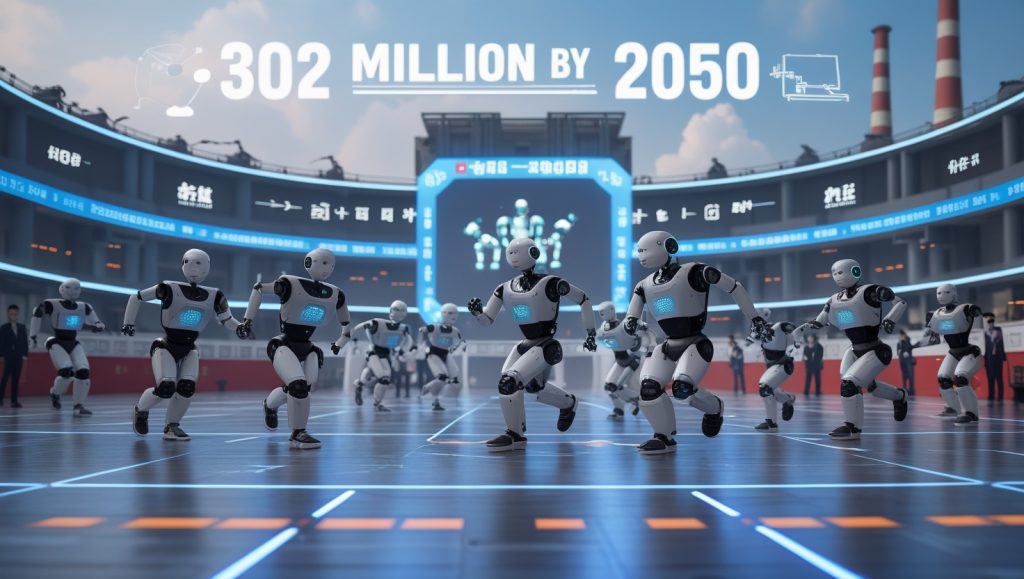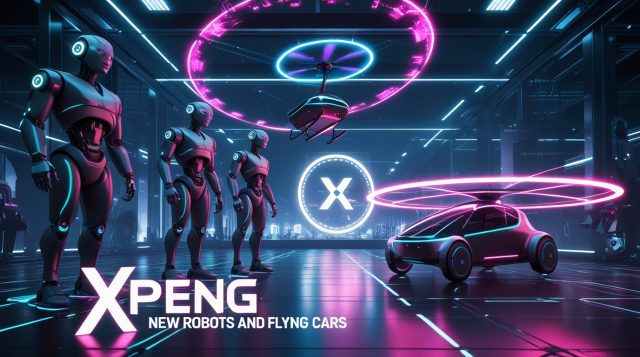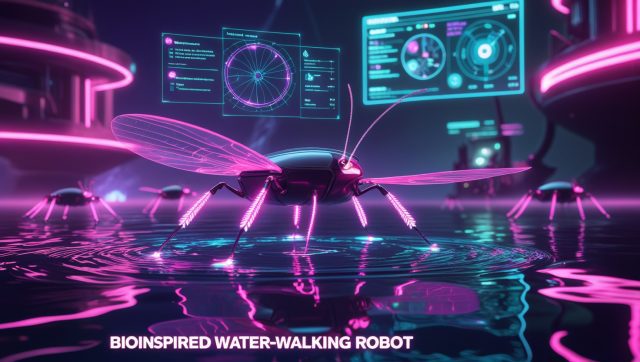The scene opens not with athletic brilliance but with a mechanical ballet of missteps: a child-sized robot face-plants near the ball, another wobbles mid-kick, and two lie motionless before being stretchered away by handlers. At China’s inaugural autonomous 3v3 robot football tournament, the slapstick overshadowed the scoreline. Yet beneath the viral moments lay a seismic shift in AI Robotics Advancements—one accelerating China toward global robotics dominance.
The Tournament: Where Comedy Meets AI Robotics Advancements
Held as a precursor to August’s World Humanoid Robot Games, Beijing’s ROBO League featured four university teams fielding Booster Robotics’ humanoids. Operating without remote controls or human intervention, the robots relied solely on AI for passing, defending, and scoring. Despite falls and collisions, Tsinghua University’s THU Robotics clinched a 5-3 victory over China Agricultural University’s Mountain Sea team.
Three overlooked technical triumphs emerged:
- Autonomous Fall Recovery: Most robots self-righted after tumbles—a capability nonexistent just 12 months prior.
- Real-Time Environmental Processing: Advanced visual sensors enabled ball tracking and basic spatial awareness amid moving opponents.
- Tactical AI: Custom university algorithms dictated formations and passing strategies, adapting mid-game.
Cheng Hao, CEO of Booster Robotics, observed that a year ago, matches required human safety assistants, and robots broke easily when fell. Now they compete autonomously, hit speeds of 1 meter/second, and sometimes stand up independently.
Why Football? Decoding China’s Industrial AI Playbook
This spectacle wasn’t designed to replace Lionel Messi. As Cheng Hao clarified, football serves as the ultimate “stress test” for real-world robotics applications:
- Algorithm Evolution: Unpredictable gameplay forces innovation in machine learning and multi-agent collaboration—skills transferable to warehouse logistics and disaster response. These advancements are already slashing operational costs, as seen in how industrial AI agents optimize energy efficiency.
- Hardware-Software Synergy: Balancing while kicking demands sensor-motor coordination identical to manufacturing robots handling fragile components.
- Public Trust Cultivation: Entertaining demonstrations normalize human-robot interaction, easing societal adoption.
China’s financial commitment underscores this strategy. Morgan Stanley projects the nation’s robotics market will surge 23% annually, hitting $108 billion by 2028—more than double its current $47 billion investment. By 2050, analysts forecast 302.3 million humanoid robots deployed across Chinese factories, hospitals, and homes, dwarfing the U.S. estimate of 77.7 million.
Table: China’s Robotics Investment Trajectory vs. Global Peers
| Metric | China (2025) | U.S. (2025) | China 2050 Forecast |
|---|---|---|---|
| Annual Market Investment | $47 billion | $29 billion | N/A |
| Projected Humanoid Robot Fleet | N/A | N/A | 302.3 million |
| Key Application Sectors | Manufacturing, Elderly Care | Logistics, Defense | Economy-wide integration |
The Unseen Hurdles: Where Robots Faltered
For all the progress, the tournament spotlighted persistent gaps in industrial AI reliability:
Dynamic Obstacle Navigation
Frequent collisions exposed flaws in real-time path correction algorithms. While robots tracked moving balls, their struggles with opponent avoidance mirror challenges in warehouse settings, where autonomous mobile robots (AMRs) are being refined for “AI robotics navigation systems.” These systems require robust LiDAR and AI integration to navigate crowded spaces, a focus for companies like Boston Dynamics. Robotics Business Review
Energy Management
Performance dips in later game segments revealed power optimization limitations. Sustained operation is critical for “AI robotics energy efficiency,” especially in logistics applications like Switzerland’s autonomous delivery robots. Innovations like regenerative braking, noted by the International Federation of Robotics, are addressing these constraints to extend robot uptime in industrial tasks. IFR
Fine Motor Control
Inconsistent kicking accuracy left balls rolling untouched near robots. Organizers responded with pragmatic rule adaptations—permitting non-malicious collisions—to accommodate current technical constraints. Event officials acknowledged this differentiated approach defines robot football.
Beyond Entertainment: Strategic Industrial Implications
China frames these events as catalysts for its broader robotics ecosystem. The tournament functioned as a deliberate showcase for:
- Supply Chain Integration: Booster’s hardware paired with university AI software demonstrated cross-industry collaboration vital for mass production.
- Global Standard-Setting: Upcoming World Humanoid Robot Games position China as the hub for embodied AI innovation.
- Commercial Viability Proof: Skills tested—like navigating uneven terrain—directly translate to elderly-care robots or construction-site assistants.
Sheng Zhong, Morgan Stanley’s industrials research head, cautions competitors: “China’s lead in AI-robotics may widen before others pay closer attention.”
The 2030 Roadmap: From Comedy to Competence
Today’s robots perform at the level of 5–6-year-old children, averaging 1–2 goals per match. Cheng Hao projects exponential growth:
- 2027–2030: Surpass youth-team capabilities with enhanced collaboration and injury prevention protocols
- Post-2030: Enable safe human-robot matches through advanced force control and predictive collision avoidance
Cheng Hao emphasized that they must ensure robots won’t injure humans during collisions, noting initial matches would prioritize safety over competitiveness.
Table: Evolution of Robot Football Capabilities
| Timeline | Technical Milestones | Industrial Applications |
|---|---|---|
| 2024 | Basic locomotion; human safety aides | Stationary factory arms |
| 2025 | Autonomous navigation; fall recovery | Hospital delivery bots |
| 2027–2030 | Dynamic multi-agent collaboration | Construction site inspection |
| Post-2030 | Safe human-robot physical interaction | Elderly mobility assistance |
The Global Implications: Why This “Failure” Alarms Competitors
While Western media highlighted robotic clumsiness, China’s industrial planners saw a $100 billion testing ground. Each fall generates sensor data to refine balance algorithms. Every collision trains safer force modulation. As Tsinghua supporter Mr. Wu noted amid celebrations: “The Mountain Sea team brought surprises. This isn’t just a game—it’s the future.”
By 2030, these platforms could migrate from pitches to:
- Disaster Zones: Navigating rubble with human-like mobility
- Micro-Surgeries: Translating ball-kicking precision to surgical instruments
- Aging Societies: Lifting patients with impact-absorbing actuators tested during tackles
The tournament’s unspoken victory? Validating embodied AI in uncontrolled environments—a hurdle that stalled Western robotics initiatives for decades.
China’s Path to 302 Million Humanoid Robots

This tournament transcended comedy. It revealed China’s systematic industrial AI strategy: using low-stakes, high-visibility demonstrations to accelerate real-world deployment. As U.S. and EU debates linger on AI ethics frameworks, China is stress-testing robots in public—turning perceived failures into iterative fuel.
The implications extend beyond sports. With 302 million humanoids projected by 2050, China isn’t just playing games. It’s industrializing embodiment—one stumble at a time.
FAQ: Decoding China’s Robot Football Experiment
Were the robots truly autonomous?
Yes. Unlike remote-controlled predecessors, these used onboard AI for all decisions, with zero human intervention during matches
Why prioritize football over practical applications?
Football’s unpredictability tests critical AI skills—like real-time adaptation and teamwork—faster than controlled factory environments.
How does this relate to industrial automation?
The sensor-motor coordination perfected for kicking a ball mirrors movements needed for warehouse picking or precision assembly.
Is China leading in embodied AI?
Morgan Stanley confirms China’s investment dwarfs rivals, with 4x more humanoids projected by 2050 than the U.S.
When will robots safely interact with humans?
Cheng Hao estimates 3–5 years for controlled environments, pending safety certification breakthroughs.
Your Next Step?
Want ongoing analysis of embodied AI’s real-world impact? Subscribe to our Industrial AI Newsletter for exclusive insights on robotics convergence.



